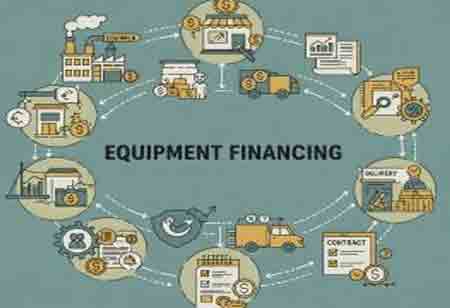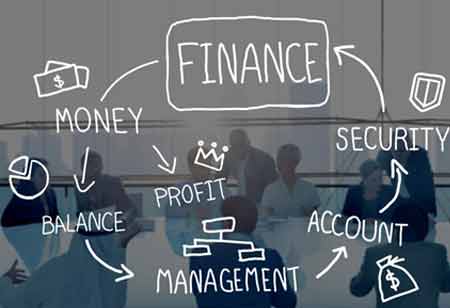CLOSE
Specials
- Trading Solutions APAC
- Wealth Management MENA
- CPA Firms Canada
- Financial Risk Management APAC
- Investment Banking APAC
- Corporate Advisory APAC
- Regtech APAC
- Escrow Services
- Digital Banking Latam
- Investment Advisory APAC
- Treasury Management Europe
- RegTech Europe
- Financial Risk Management Europe
- Mortgage Broker
- Financial Licensing Europe
- RIA Advisory Europe
- FinTech Canada
- Financial Asset Management APAC
- Financial Health Europe
- Trading
- Investment Services Europe
- Lending Mangment Latam
- Payment Solution Europe
- Broker Dealer Firms Canada
- Alternative Investments Canada
- Financial Fraud
- Investment Management Latam
- Investment Banking Canada
- Lending Management
- Payment Solution
- Proprietary Trading Europe
- Wealth Management
- FinTech
- Financial Brokerage Firm APAC
- Investment Advisory Europe
- Claim Adjusting
- Claim Adjusting APAC
- Mergers and Acquisitions Consulting APAC
- Equipment Financing
- CPA Firms
- Mergers and Acquisitions Consulting Canada
- Investment Services
- Valuation Services Canada
- Wealth Management APAC
- Broker Dealer Firms
- Debt Collection Agencies
- Mergers and Acquisitions Consulting
- FinTech Europe
- Fintech Latam
- Financial Planning / Retirement
- Investment Management
- Financial Compliance
- Payment and Card Latam
- Financial Marketing
- Investment Services Latam
- Digital Insurance Europe
- Alternative Investments
- Trading Solutions Europe
- Tax Advisory Canada
- Mergers and Acquisitions Consulting Latam
- Wealth Management Latam
- Digital Banking Europe
- Business Loan
- Financial Portfolio Management Canada
- Financial Restructuring Europe
- Mergers and Acquisitions Consulting Europe
- Wealth Management Europe
- Debt Collection Agencies Europe
- CFO Services
Weekly Brief
×Be first to read the latest tech news, Industry Leader's Insights, and CIO interviews of medium and large enterprises exclusively from Financial Services Review
Thank you for Subscribing to Financial Services Review Weekly Brief
The Digital Transformation of Equipment Financing: Opportunities for Growth
The equipment financing industry has become vital for facilitating growth and innovation as businesses navigate the complexities of the modern economic landscape.

By
Financial Services Review | Friday, August 22, 2025
Stay ahead of the industry with exclusive feature stories on the top companies, expert insights and the latest news delivered straight to your inbox. Subscribe today.
The equipment financing industry has become vital for facilitating growth and innovation as businesses navigate the complexities of the modern economic landscape. This process involves companies acquiring the machinery, tools, and technology necessary for their operations through leasing or loans. It is essential for helping organizations maintain operational efficiency without the burden of a large capital investment.
The demand for equipment financing has surged as companies look to upgrade or replace outdated technology and machinery. Factors driving this growth include increased spending on infrastructure, technological advancements, and a greater focus on operational efficiency.
Emerging Trends in Equipment Financing: Flexibility and Digital Transformation
One of the most notable trends in the equipment financing landscape is the shift from traditional ownership models to subscription-based or pay-per-use arrangements. Businesses are seeking flexibility and scalability, opting for leasing options that allow them to access the latest equipment without taking on the full financial burden of ownership. This trend highlights a desire for operational flexibility that reduces the risk of obsolescence, as companies can more readily adapt to changing market demands without being tied to long-term ownership commitments.
The equipment financing industry is also undergoing a significant digital transformation, integrating technology into various aspects of the financing process. Online platforms, artificial intelligence (AI), and data analytics are utilized to streamline application processes, enhance customer experience, and assess creditworthiness. These digital tools enable lenders to offer more personalized financing solutions tailored to a business's specific needs, thereby improving the overall efficiency of the financing process. This technological integration allows for quicker decision-making and enhanced customer satisfaction.
With an increasing emphasis on corporate social responsibility, lenders are looking closer at the sustainability practices of businesses applying for equipment financing. Lenders often view companies engaged in environmentally friendly practices and those investing in green technology more favorably. This trend influences financing decisions and encourages businesses to adopt eco-friendly practices, creating a win-win scenario for both lenders and borrowers committed to sustainability.
Challenges Ahead: Economic Uncertainty and Regulatory Compliance
Despite the positive trends, the equipment financing industry faces several challenges that must be addressed to ensure its continued success. The fluctuating economic environment, marked by inflation concerns and geopolitical uncertainties, poses risks for lenders and borrowers. Companies may hesitate to invest in new equipment amid fears of economic downturns, which could impact the demand for financing solutions. Conversely, lenders may face default risks if businesses cannot sustain their operations due to prolonged economic pressures.
Navigating regulatory compliance is another challenge within the industry. The equipment financing sector is governed by strict regulations that vary by region and sector. Staying compliant with these regulations is crucial yet challenging, particularly as new guidelines emerge in response to changing economic conditions and technological advancements. Failure to adhere to regulations can result in significant financial penalties and damage a lender's reputation, making compliance a critical focus for industry players.
Additionally, rising interest rates, as central banks around the world adjust rates in response to inflation, can dampen demand for equipment financing. As borrowing costs increase, businesses might delay investments in new equipment or seek lower-cost alternative financing solutions. Lenders must navigate this evolving landscape carefully, balancing competitive rates with their financial viability to remain attractive to clients.
Harnessing Growth Opportunities in Equipment Financing
Despite these challenges, the equipment financing industry is well-positioned to seize several emerging opportunities. As industries like manufacturing, healthcare, and construction embrace Industry 4.0, there will be a growing need for advanced equipment, including automation tools and smart technology. Lenders can capitalize on this increased demand by offering financing solutions specifically designed for technologically advanced equipment, thus positioning themselves as value-added business partners. Furthermore, companies looking to grow often seek opportunities in untapped markets.
Equipment financing services can expand their offerings to cater to small and medium-sized enterprises (SMEs) and businesses in emerging economies. By tailoring financing products for regional markets, lenders can tap into significant growth opportunities while supporting the success of smaller businesses that may not have traditionally accessed such financing. Investing in customer experience is also an area with significant potential for growth. Equipment financing providers can differentiate themselves in a competitive market by streamlining application processes, improving communication, and offering flexible repayment options.
Enhancing customer service and support can increase loyalty and attract new clients, further solidifying a firm's market position. Creating strategic partnerships with equipment manufacturers, industry associations, and technology providers can open new avenues for growth. Collaborative efforts can lead to bundled financing offerings that simplify the acquisition process for customers, making it easier to access the latest equipment and technology.

Copyright © 2025 Financial Services Review. All rights reserved






